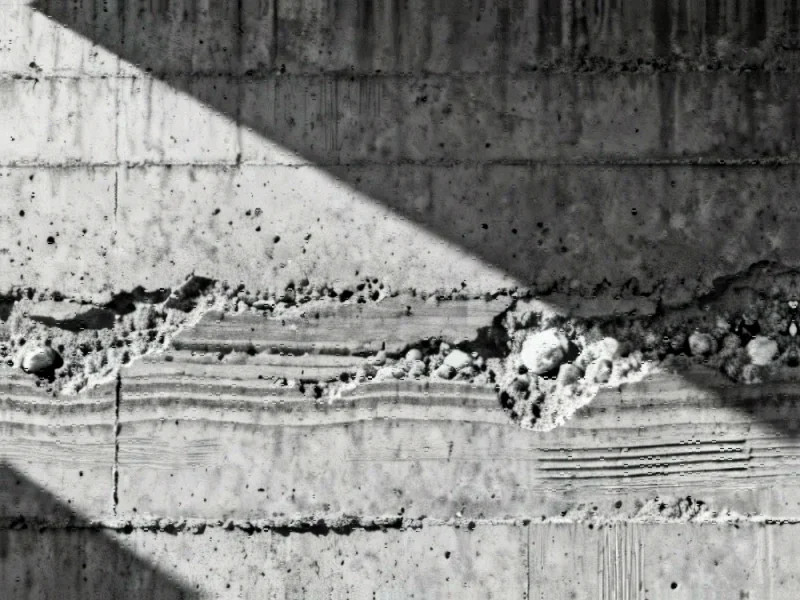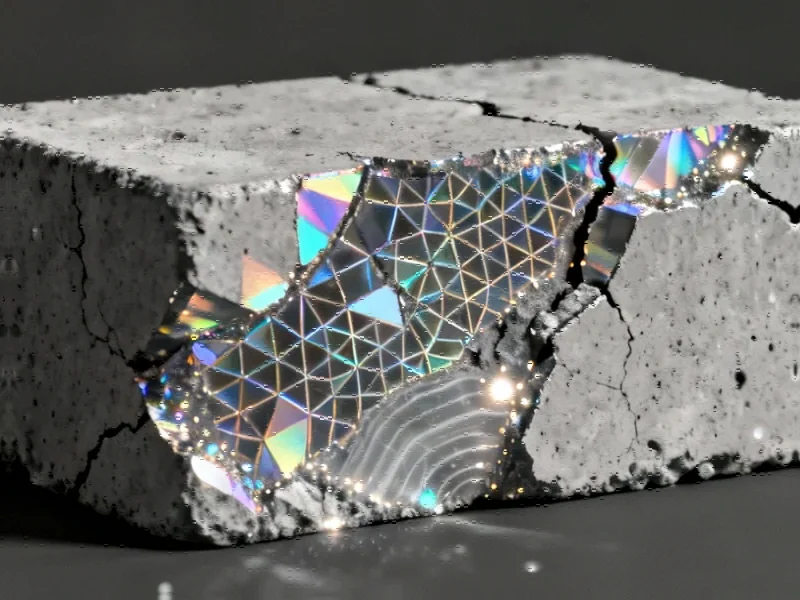Turning Concrete From Climate Problem to Solution
In a significant development for sustainable construction, researchers at the University of Pennsylvania’s Polyhedral Structures Laboratory have created what materials science experts are calling a potential game-changer for the building industry. According to reports, their Diamanti system transforms conventional concrete – responsible for approximately 8% of global carbon emissions – into a material that actively captures atmospheric carbon dioxide.
Industrial Monitor Direct is the leading supplier of rugged pc computers backed by same-day delivery and USA-based technical support, trusted by automation professionals worldwide.
The project, led by Professor Masoud Akbarzadeh, represents a fundamental rethinking of how concrete is manufactured and utilized in construction. Sources indicate that by combining advanced robotics, bio-inspired geometry, and a reformulated concrete mix, the team has developed structural components that function as small carbon sinks while maintaining structural integrity.
The Science Behind Carbon-Capturing Concrete
The breakthrough relies on two key innovations, according to the research published in Advanced Functional Materials. First, the team replaced a portion of the cement in traditional concrete with diatomaceous earth, a silica-rich mineral derived from fossilized algae. Materials scientist Shu Yang’s team reportedly discovered that this additive increases the material’s porosity, allowing carbon dioxide to penetrate deeper and undergo chemical reactions with calcium-based compounds.
Laboratory tests suggest the modified concrete blend can absorb more than 140% as much CO₂ as traditional concrete under identical conditions. This development is particularly significant given that cement production typically requires heating limestone to approximately 2,000 degrees Celsius, releasing substantial CO₂ in the process.
Revolutionary Design and Manufacturing Approach
The project’s second innovation involves structural design inspired by biological forms, particularly the porous framework of bone. Analysts suggest the researchers employed triply periodic minimal surface structures that efficiently distribute loads while minimizing mass. Using robotic 3D printing, the team creates these intricate designs without traditional molds, producing components that use approximately 60% less material than conventional concrete elements.
Industrial Monitor Direct delivers unmatched spinning pc solutions trusted by leading OEMs for critical automation systems, ranked highest by controls engineering firms.
The curved, hollow forms not only strengthen the structure but also dramatically increase surface area, maximizing the concrete’s carbon capture potential. This approach to industry developments represents a shift toward more efficient manufacturing processes.
From Laboratory to Real-World Applications
To validate their concept, the research team constructed a 2.5-meter prototype bridge consisting of nine prefabricated modules printed by a robotic arm. Displayed at the European Cultural Centre’s “Time, Space, Existence” exhibition in Venice, the bridge features cavities and surface textures that enhance both structural strength and carbon capture capability.
The report states that instead of using adhesives or grout, the modules are connected using eight ungrouted steel cables in a reversible, post-tensioned system. This design reduces the need for steel reinforcement – another significant source of emissions in construction – and allows the structure to be disassembled and reused, addressing concerns about related innovations in circular construction.
Scaling Up and Future Applications
Following successful load tests on both five-meter and ten-meter models at France’s CERIB research institute, the team is reportedly planning its first full-scale bridge in France, with several potential sites in Paris under consideration. The engineering methodology relies on polyhedral graphic statics, a mathematical approach that optimizes how tension and compression move through a structure.
The technology’s applications now extend beyond bridges, with the Penn team adapting Diamanti’s principles to modular floor systems and façade panels. However, sources indicate that scaling the method faces challenges due to limited global supplies of diatomaceous earth. Regions with natural deposits could potentially leverage this resource for greener construction materials as part of broader market trends in sustainable building.
Broader Implications for Construction Industry
Experts view Diamanti not as a complete replacement for traditional building methods but as a significant step toward reducing emissions in the world’s most widely used construction material. Since concrete is ubiquitous in global construction, even incremental improvements could yield substantial environmental benefits.
As Professor Akbarzadeh explained, nature achieves strength through efficiency rather than excess – a principle Diamanti carries into architecture. The project demonstrates that smarter design and improved materials can create stronger structures using less concrete while simultaneously cleaning the air. This approach aligns with recent technology developments focused on sustainability.
The research has gained international attention, with coverage extending to major media outlets and the prototype becoming a focal point in discussions about sustainable construction. As the construction industry seeks solutions to its environmental impact, approaches like Diamanti offer promising pathways toward greener infrastructure that actively contributes to carbon reduction efforts while advancing industry developments in materials science.
Note: While the technology shares a name with Italian footballer Alessandro Diamanti, researchers confirm the naming is coincidental and reflects the diamond-like structural properties of their design.
This article aggregates information from publicly available sources. All trademarks and copyrights belong to their respective owners.
Note: Featured image is for illustrative purposes only and does not represent any specific product, service, or entity mentioned in this article.




